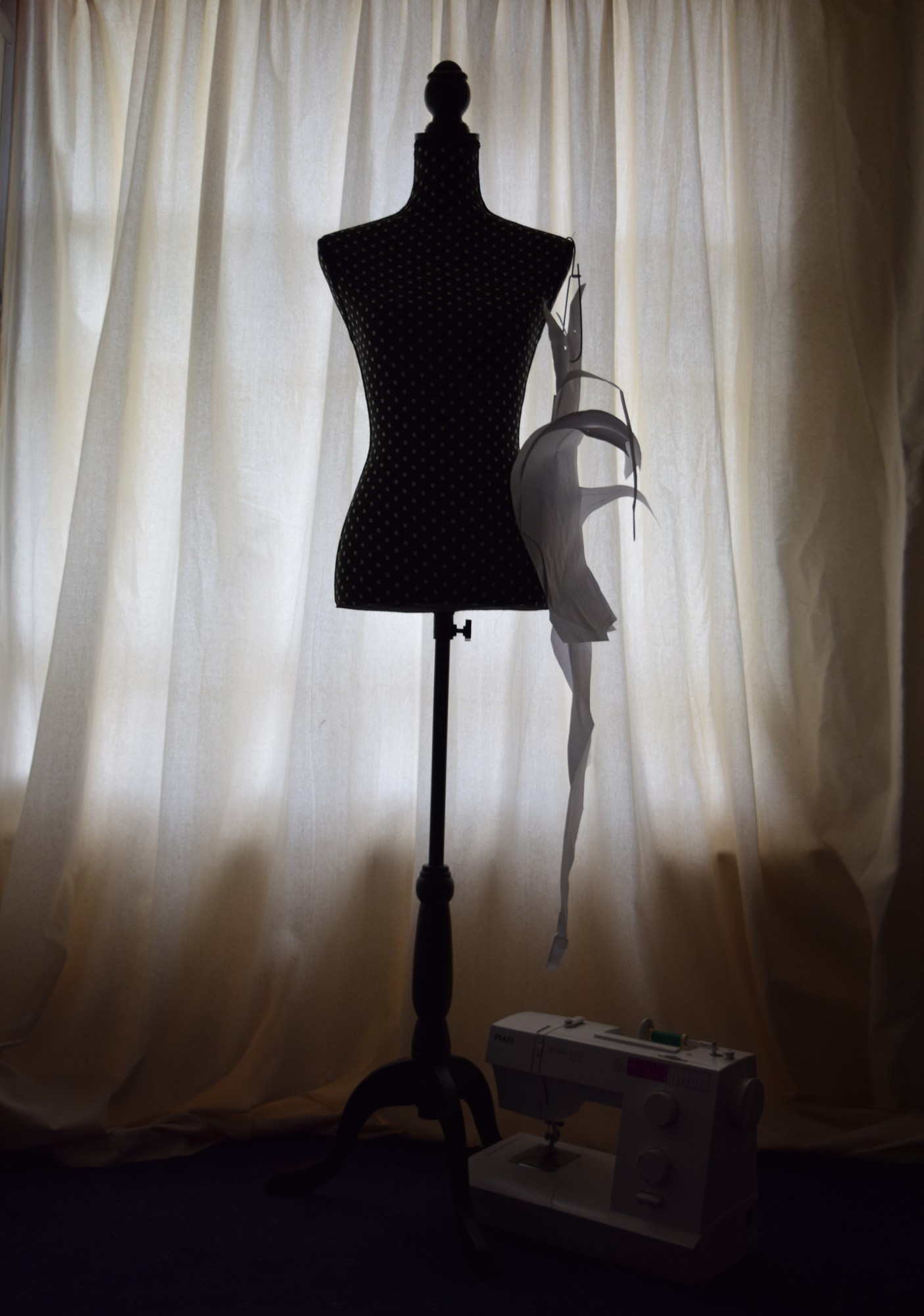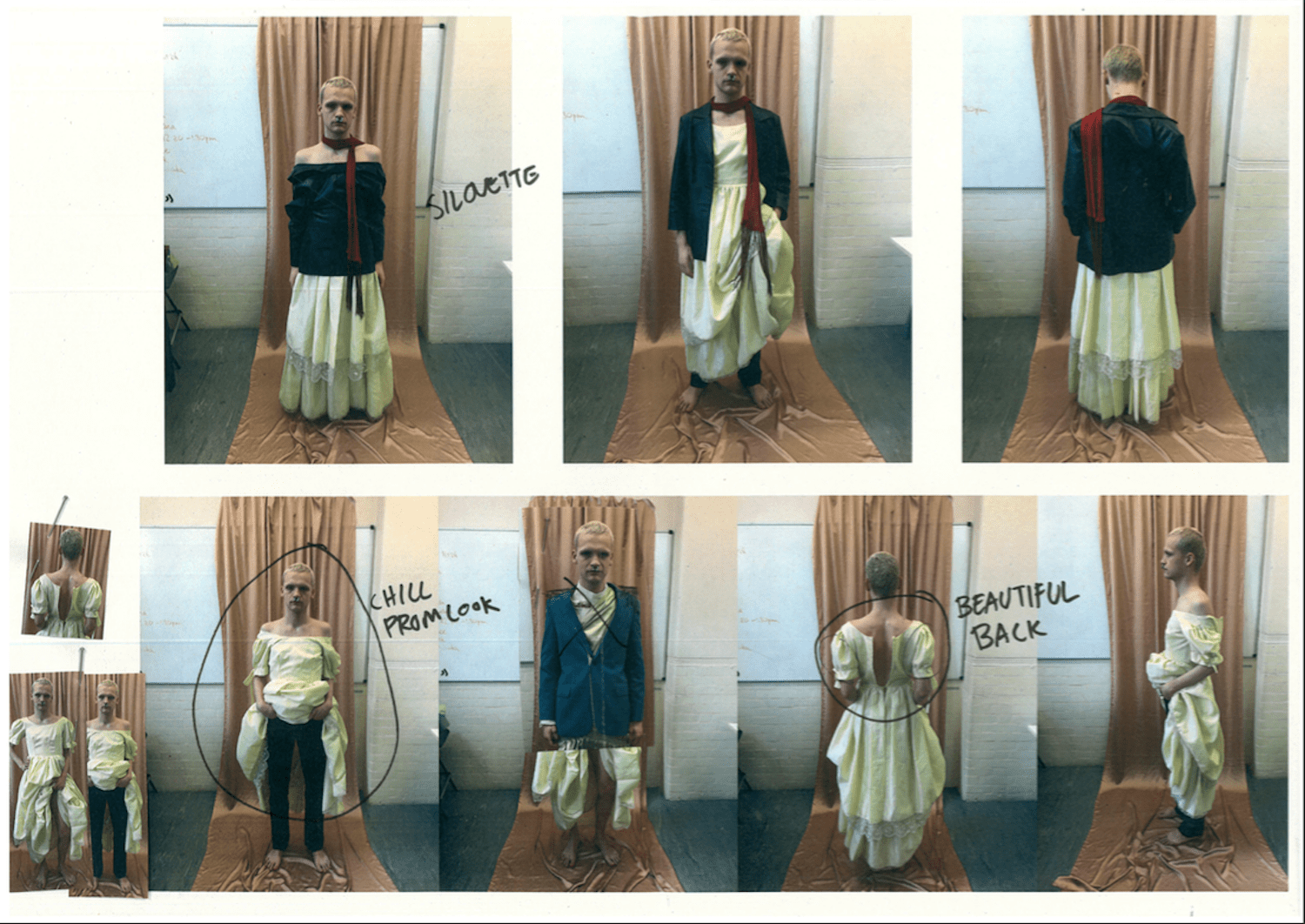This time of year has never been a particularly comfortable one for final year university students, no matter their field of study. But, under the climate of uncertainty brought about by the COVID-19 pandemic, what was already a tense run-up to final hand-ins and exams has only become considerably more fraught. This week higher education institutions across the UK have announced the immediate abandonment of face-to-face tuition, and the closure of almost all facilities, in favour of online teaching methods. Disruptive a proposal as it may seem, for students on courses that rely predominantly on written assessment — humanities degrees, for example — the transition is at least a practically manageable one. For those enrolled on programmes at the country’s art schools, however, the move poses a direct threat to students’ ability to complete their work.
Among the faculties most significantly affected is fashion. Fashion students are particularly reliant on access to the studio space, high-specification equipment and technical services that few have access to at home. And it’s not just a matter of making, either, with the cancellation of their June press shows and graduate showrooms closing a vital link between students and professional opportunities. Sending shockwaves through graduating year groups, coronavirus has cast a shadow of uncertainty over educational careers that have been years in the making.

One such student is Halina Edwards, who’s set to graduate from the University of Westminster’s MA Menswear. Months away from the finish line of an eight-year trajectory, the announcement of the school’s closure understandably came as both a shock and a disappointment. Rather than submit the typical eight physical looks, students have been asked to submit their work digitally. “In an informal meeting we were told that things are going to be moved online, that, rather than make an eight-look collection, we can just submit technical drawings instead,” she explains, a sudden deviation from traditional means of assessment. “It just feels really weird after all of the work we’ve put in. Everything’s been digitalised; there’s no contact time and no access to the school’s machines as of next week.”
Elsewhere, on Monday the University of Arts London (UAL), whose constituent colleges include Central Saint Martins (CSM) and London College of Fashion (LCF), announced the closure of its facilities to students on its BA Fashion courses. “We all felt a sort of emptiness when the announcement was made,” says Linnea Nordquist, a final year student on LCF’s BA Menswear. “It wasn’t just about not being able to use the studios anymore, but there were also questions about what would happen to our final collections, our deadlines, requirements and showcase opportunities.” Given the recent nature of the news, concrete answers to those questions have yet to be offered. Despite the blow, many are now stoked by a zeal to overcome the adversity presented by current circumstances. “I have been studying for eight years to get to this, and I will not just let this final collection opportunity slip through my hands,” Linnea says. “I think in these times it is important to not just put everything on pause, to continue working with what you love in a way that doesn’t put others at risk. I’m in self-quarantine in my tiny room in Dalston, trying to use it as my studio space. Of course, there are many things it’s not possible to do with just domestic sewing, but I will work until I run out of fabrics and hopefully by that time, the world has found solutions for us to live a life without quarantine any more.”

A similar sense of determined optimism prevails among students on CSM’s BA programme, recent graduates of which include Fredrik Tjærandsen and Pauline de Blonay. Though term had already finished for the Easter vacation, numerous students nonetheless remained in the studio in keeping with final year custom. “It’s been five years of working towards these specific couple of months, as now is when we’ve started to buy our final fabrics, and work on our final garments,” BA Womenswear graduand Anthon Raimund explains, going on to note the drastic changes in the criteria by which collections are to be assessed. “They’ve assured us that all of the work that we’ve already submitted is enough for us all to pass, so we’ve all got our degrees,” he says. “But anything from now on is an extra, and we won’t be penalised at all… obviously, they understand that a lot of people don’t have the equipment and space at home, or are flying home to other countries.” Rather than see an obstacle in the situation, Anthon’s opted to take it as an opportunity to develop his work further than he might otherwise have been able to under the typical time constraints. “The way I’m seeing it is that I’ve got an extra few months, so I’ve got to make it loads better than it would’ve been before. I think that’s the only way you can really look at this and stay sane.”
Conner Ives, a coursemate of Anthon’s, is also remaining pragmatic. “I of course don’t put any blame on anyone in the faculty at Saint Martins, because how do you even navigate something like this?” he says. “In the face of a pandemic, fashion is probably one of the most disposable things. It was such an appropriate decision to make. At the same time, it’s an artist’s job to lessen the numbness we feel towards daily news or life events, to challenge the status quo in some way.”

Even in the face of the cancellation of the press show, classmates have been pooling the resources required to finish their collections, as well as the connections they’ve amassed, with sights to eventually stage a show on their own terms. “I’m very lucky, as I have a studio in my flat which is usually where I work from when I’m not doing school assignments,” says Conner. “I’m speaking from a point of privilege, but everyone is trying to help each other. Our tutors are constantly reminding us of the undying network that CSM has created within the industry. If there’s ever a time to kind of call upon that network, it’s now. It’s why we’re asking anyone working in the industry who thinks they can contribute support, funding or anything that may help us to establish a way of still exhibiting our work to please get in touch at m.e.ashley@csm.arts.ac.uk!”
Still, for all the schools whose doors have closed, a handful remain open, despite protest on the part of their respective student bodies. The Royal College of Art (RCA) is one of them. “I’m speculating, but I think that because the government isn’t responding in a way that’s actually enforcing change within the institutions, they don’t want to take the decision to close until it’s absolutely necessary,” explains Sam Jamieson, a student on the school’s MA in Menswear. “The situation here is quite unclear at the moment. All of the teaching staff and staff that aren’t operating workshops are working at home, and most of the year have started to self-isolate.” Sam does, however, see a silver lining, and the possibility for radical redevelopments in how we view and consume fashion in a broader sense. “What this whole situation has really highlighted is that fashion, in its current form, with people flying from country to country in order to view things, isn’t sustainable in these sort of times,” he says. “With the RCA graduate show, each year it’s different, it’s about rethinking the format of how we present fashion. The majority of people today view content online, through platforms like Instagram, and I think it’s important for us to do something that’s engaging on an online platform.

“Of course, the show is important, because of the physicality of fashion. But you have 400 people that actually attend it, and then the rest of the world sees it online anyway. Maybe this situation will allow us to develop a way of conveying work in a more interesting way than just a few catwalk photos. It might not be the outcome we had in mind setting out, but design’s all about adaptation,” he finishes with. “It’s about assessing the situation you face and responding to it.”

